13 Ways to Prep Your Yard Before Winter Begins

With winter on the horizon, many home gardeners are spending their days raking leaves and trimming back branches, hoping they can keep their plants healthy and protected before the snow starts to fall. However, it takes more than just a few passes with the leaf blower to fully prep your yard before winter. If you want a lush lawn and a healthy garden come springtime, here’s everything you need to do before it gets blustery out there.
1
Skip your fall cleanup.
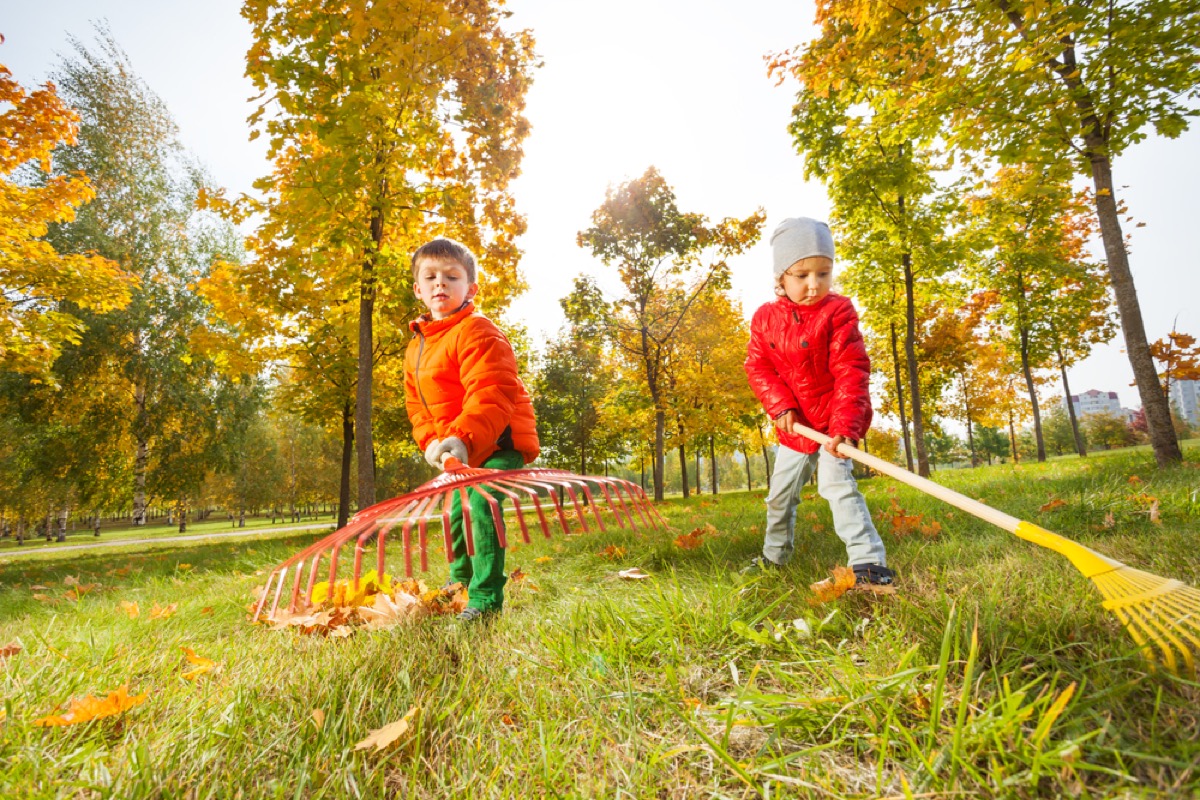
In order to keep your yard healthy all winter long, leave raking leaves off your fall to-do list. “Fallen leaves act as a wonderful winter blanket for soil, insulating the plants roots and preventing erosion,” says gardening expert Stephanie Rose, the founder of Garden Therapy and author of the upcoming book Garden Alchemy.
In leaving your leaves alone, Rose says you’ll provide food and shelter for wildlife throughout the winter and maintain your garden’s delicate ecosystem in the process. Plus, from an aesthetic perspective, this will also “provide winter interest as seed heads and branches become decorated with snow,” she notes.
2
Run your lawnmower over your leaf-laden lawn.
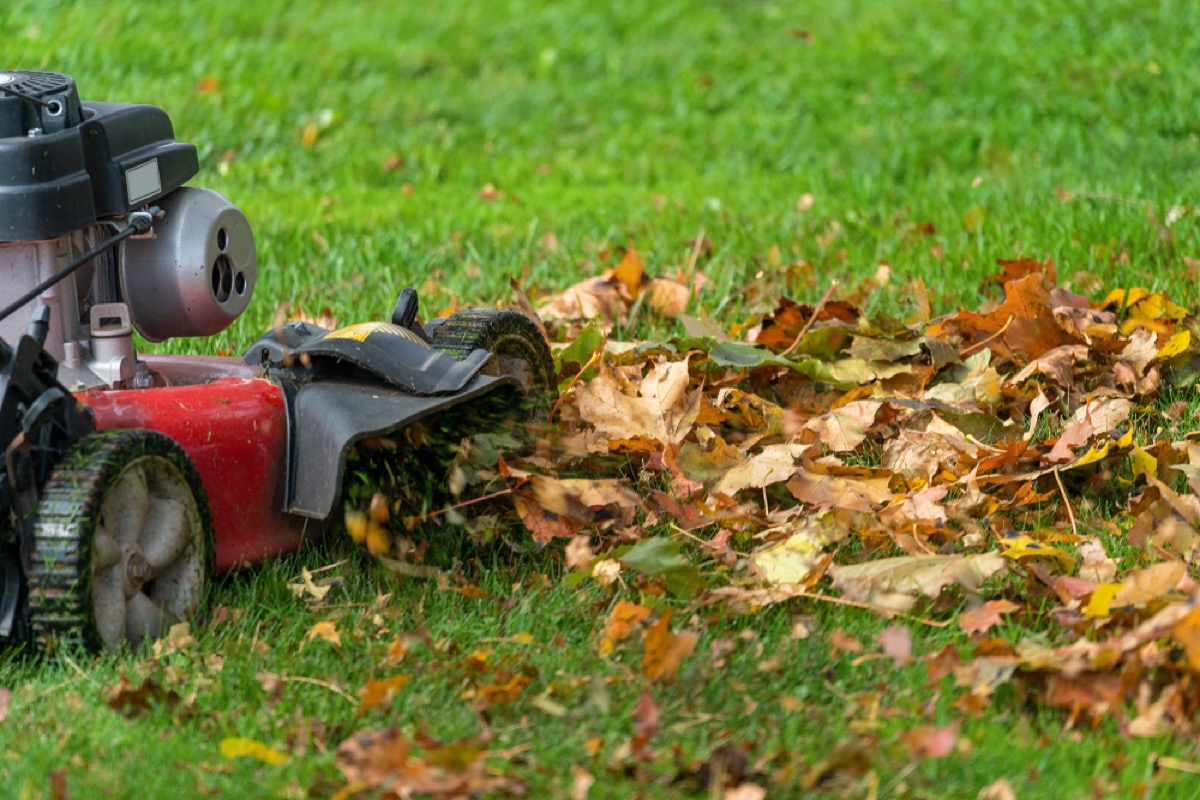
While you may have skipped your raking duties, there’s one essential task that can put some of those leaves to good use: running your lawnmower over your lawn before the first snowfall. When they’re chopped into smaller pieces with a lawnmower, leaves “protect the soil with a natural mulch,” says Rose. This will help the leaves decompose more quickly, becoming more efficient food for your plants.
And if you have an excess of leaf mulch on your lawn, make sure to sprinkle some throughout your garden and around the base of your trees where your lawnmower can’t reach, too.
3
Cover your winter vegetables.
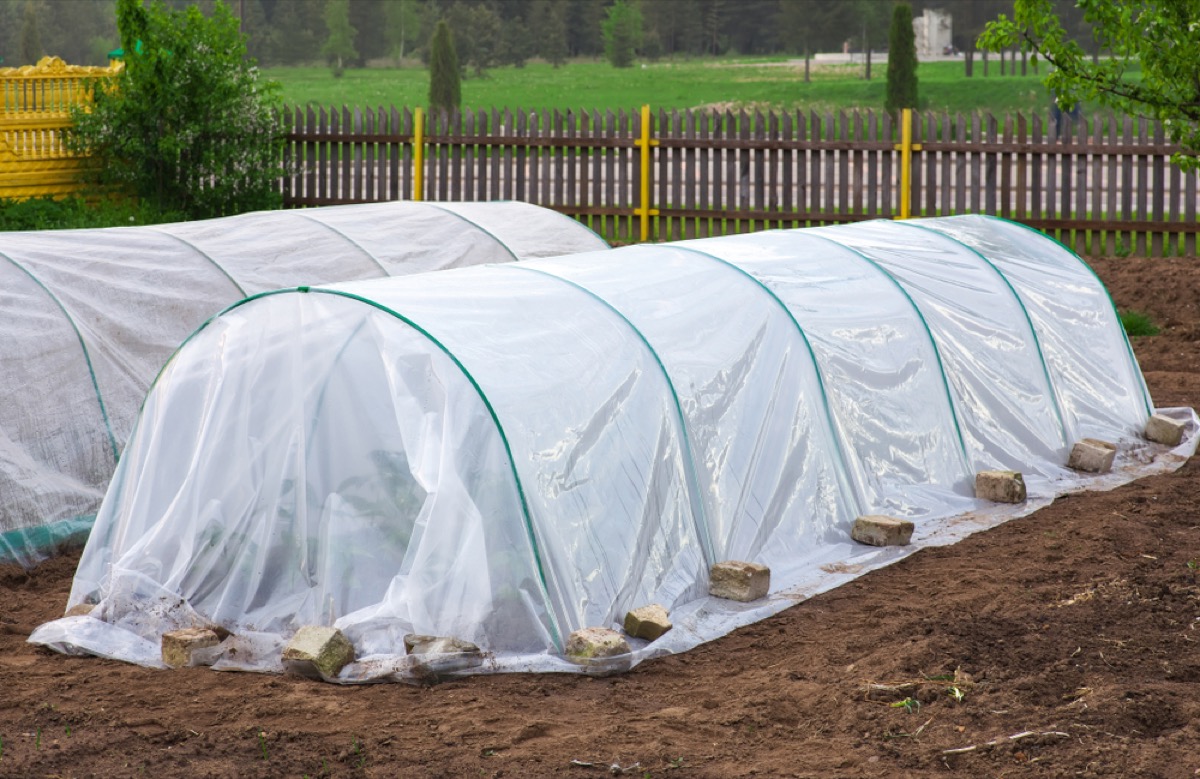
If you’ve got a vegetable garden you’re hoping to keep healthy for springtime, it’s imperative that you protect those edibles before the first frost. Even if your vegetables are cold-tolerant, like carrots or winter greens, Rose recommends that all gardeners “cover [their] vegetable garden with a cold frame or hoop house” to keep frost from damaging the plants.
4
Stop your usual watering schedule.
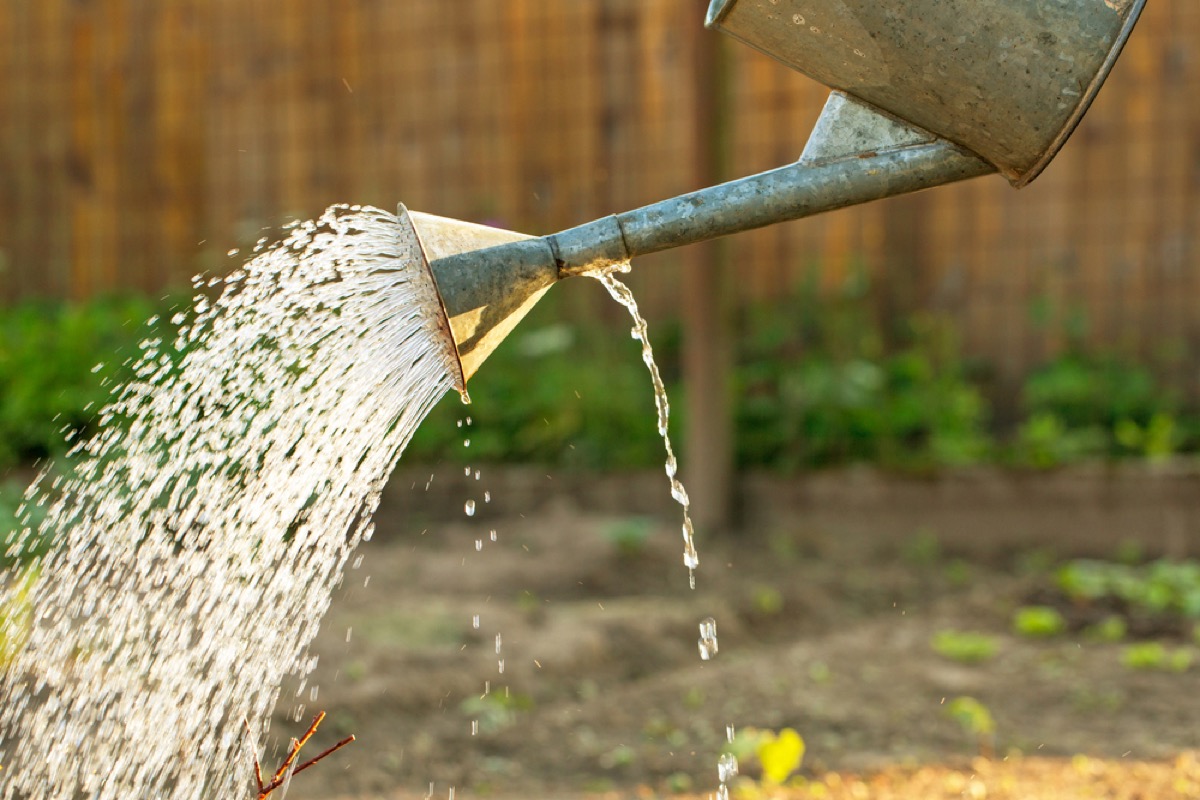
Think watering your plants when the temperature dips will keep them healthier? Think again. According to gardener Kevin Espiritu, founder of Epic Gardening and author of Field Guide to Urban Gardening, watering your plants when the temperature drops below freezing is actually more likely to cause their untimely demise.
“Plants don’t need as much water, as they stop growing as rapidly during the winter,” Espiritu explains. So, soaking your soil when temperatures drop below freezing can rapidly kill your plant life. Instead, stick to watering during daylight hours when the temperature’s warmer; you may even be able to skip watering again until spring, depending on how warm it gets in your area.
5
Avoid walking on your grass.

To keep your yard in tip-top shape, it pays to stop walking on it as much as possible when temperatures drop. Even if it hasn’t snowed yet, frost can make virtually any type of greenery—even grass—precariously brittle, meaning that a leisurely stroll around your garden is “a quick recipe for snapping off frozen tips and damaging the lawn come springtime,” according to Espiritu. Sadly, there’s no guarantee your grass and plants will rebound when the weather warms up.
6
Shelve your fertilizer.
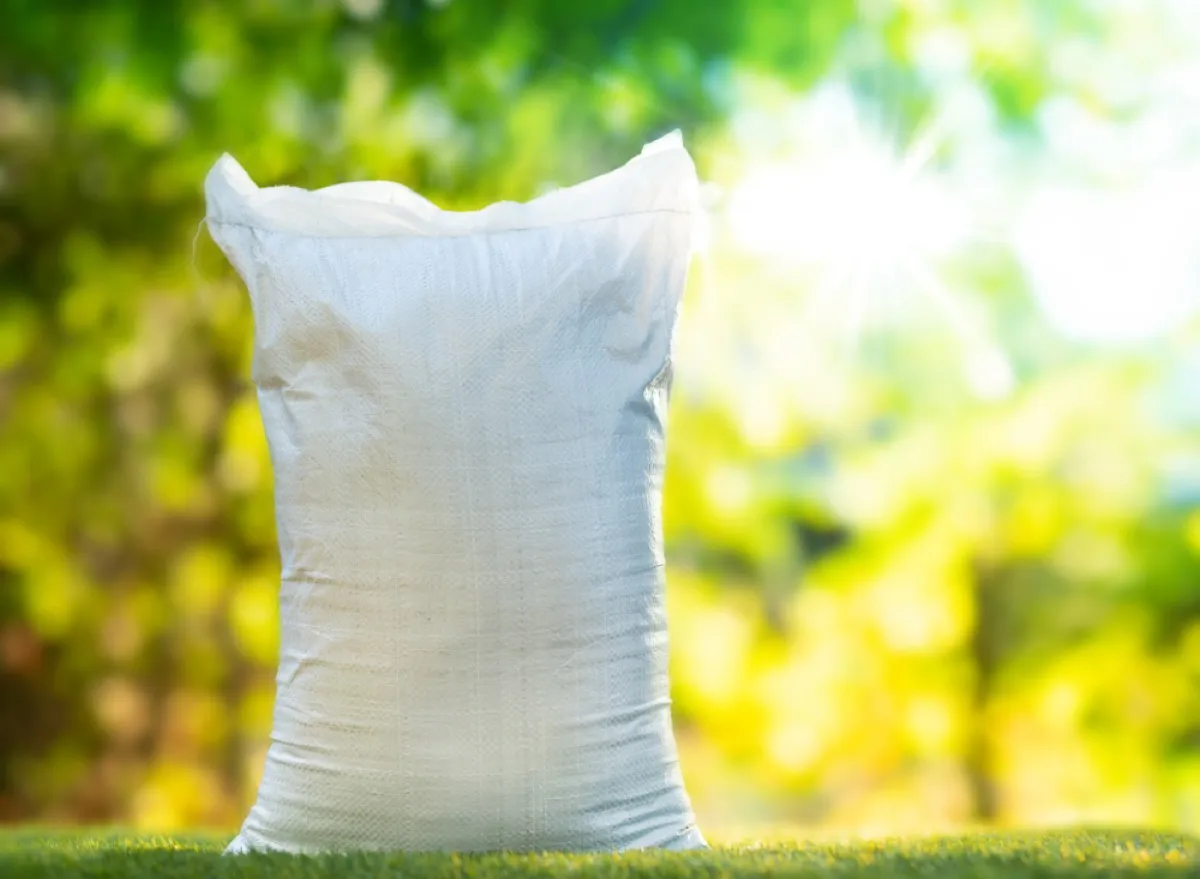
While it’s tempting to feed plants year-round, doing so may actually harm your garden in the long run, says landscape architect Kate Karam, editorial director of the gardening site Monrovia. Instead, she suggests skipping the fertilizer during the colder months of the year. “You will be rewarded with bigger blooms early next year,” Karam says.
7
Add salt-tolerant plants to areas that face the road.
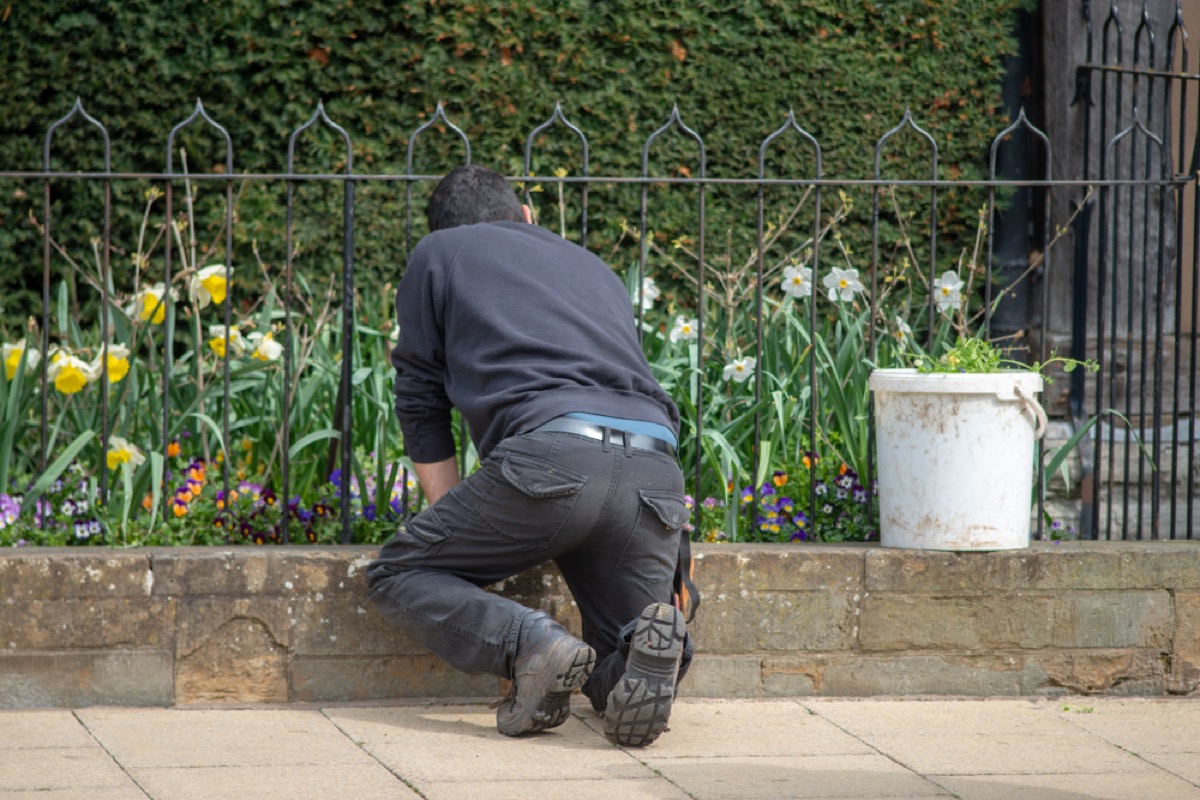
If you live on a road that gets salted or have property that abuts a body of saltwater, try adding some salt-tolerant plants to the perimeter of your lawn or garden to help protect the rest of your vegetation. Karam suggests “specimens that can handle a salty bath,” like paper birch, Eastern red cedar, pitch pine, black cherry, white oak, and Eastern cottonwood trees, or herbs like marsh-mallow, Canada Mayflower, evening primrose, or seaside goldenrod.
8
Plant your perennials for the following year.

Want to see those perennials grow healthy by early next year? There’s no time like the present to start planting. “The window for planting, particularly perennials, is beginning to close,” says Karam. “Get to a garden center now because plants installed in fall will be rooted in and ready to rock come spring.”
9
And tie back your tall perennials.

It’s not just cold you have to consider when it comes to preparing your yard for winter—those brutal winds can be just as damaging. In order to prevent them from ruining your plants, “tie up or stake bushy or tall perennials such as clematis,” says Karam. That will ensure that those icy gusts don’t usher in their untimely demise.
10
Deer-proof your fence.

If the cold and frost don’t kill off your plants in the winter, deer certainly will. Landscaper Douglas Dedrick, founder of This American Lawn cautions that with their food sources limited by the cold weather, many deer will make their way into gardens in search of sustenance. And it’s not just your vegetables they’ll be after: “Even ‘deer-proof’ plants like arborvitae are on the menu when deer are hungry enough,” explains Dedrick. To help keep them out, install deer-proof fencing before the first snow, or use a liquid deer repellent to deter them.
11
Aerate your lawn.

If you want your grass to look lush and healthy come springtime, it pays to aerate your lawn before the temperature starts to drop. First rake out the thatch, which is a layer of material that builds between the grass and the soil. The thatch will help “the grass to grow better by allowing nutrients and water to more easily get to the grass roots,” explains gardener Susan Brandt, co-founder of Blooming Secrets. After doing so, use an aeration tool to help permeate the soil, making it easier for oxygen, moisture, and vital nutrients to make their way down to the root of the grass.
12
Dig up your tender bulbs.
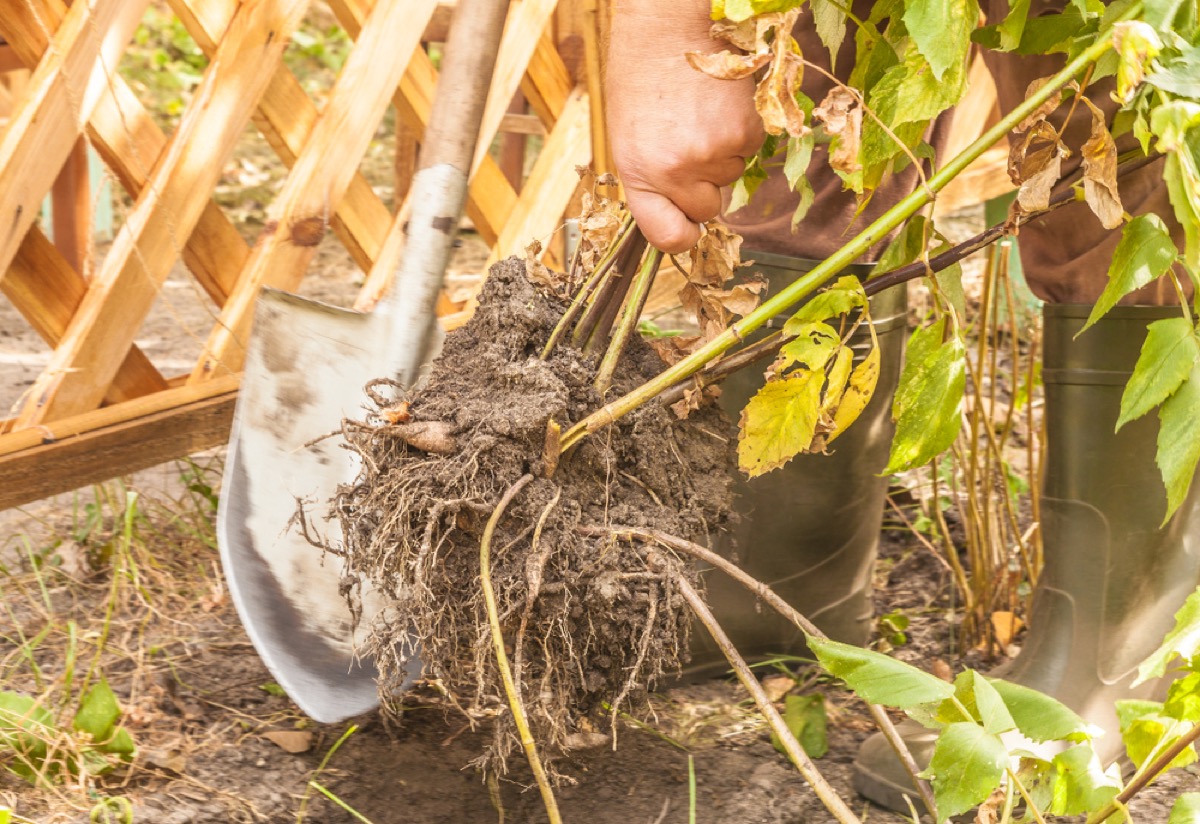
Tender bulbs, like cannas, gladioluses, and dahlias, don’t fare well under frost, so before it’s too cold outside, it’s important to dig them up and keep them safe indoors until spring.
When their leaves have turned black, Brandt recommends that gardeners “carefully dig them up and let them dry indoors on newspaper for a few days.” After they’ve sufficiently dried out, pack them in shredded newspaper and keep them in a dark, slightly damp location, like a basement. When the temperature warms up in the spring, discard any bulbs that have rotted, and replant the ones that are still in good shape.
13
Remove any rotting vegetation.
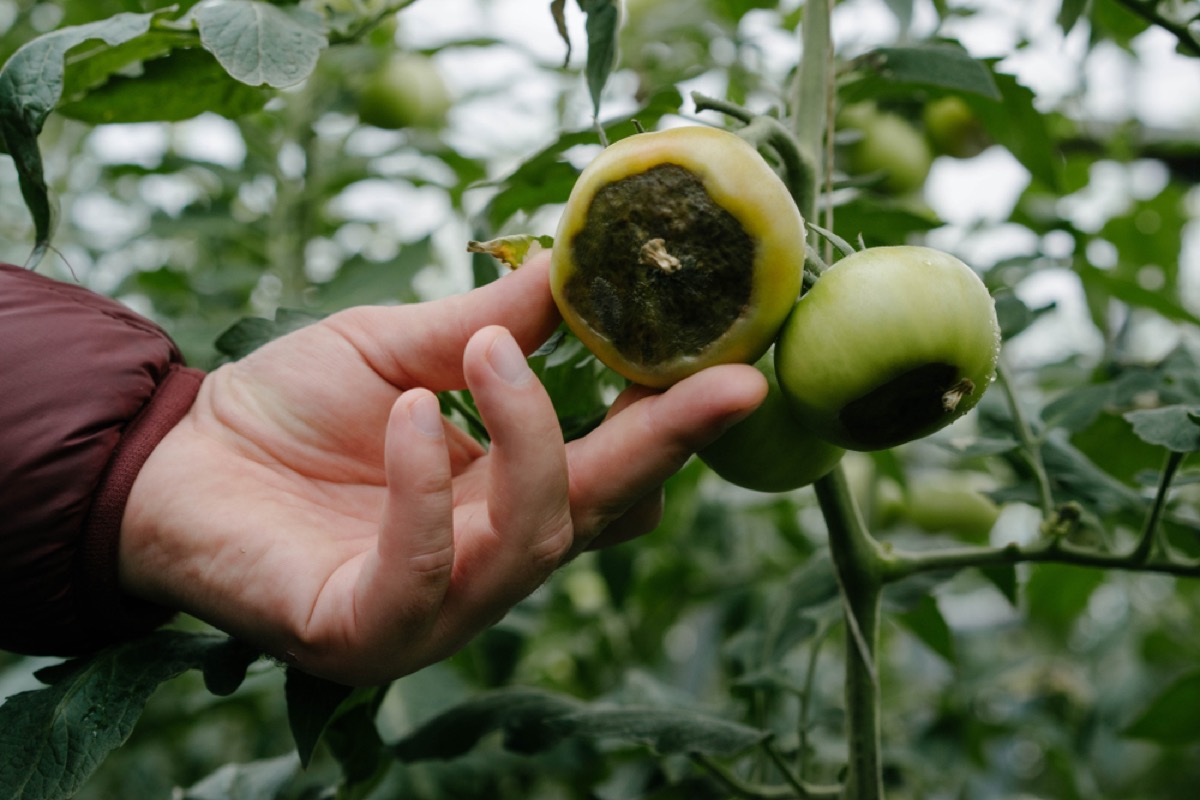
While you might assume that winter will kill off any pests in your garden, that’s not the case. In fact, failing to remove rotting or bug-laden vegetation from your garden could mean trouble come springtime. “Plants that are no longer viable could breed insects and diseases,” says Brandt, who notes that pests will typically lay their eggs in a plant’s leaves and stalks, meaning it’s important to pull them out by the root.
However, that doesn’t mean all those worse-for-wear plants have to go to waste. Instead, Brandt suggests mixing them into your soil for the future.